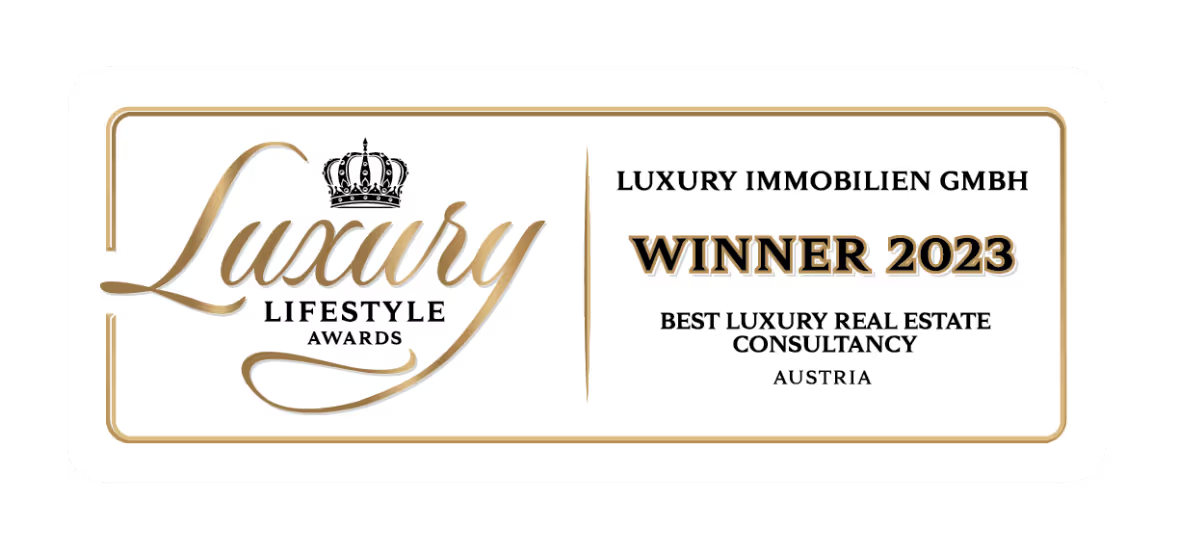How much does it cost to move to Austria
How much does it cost to live in Austria for those who want to move to this country - the cost of rent, the average price of food, medicine, education.
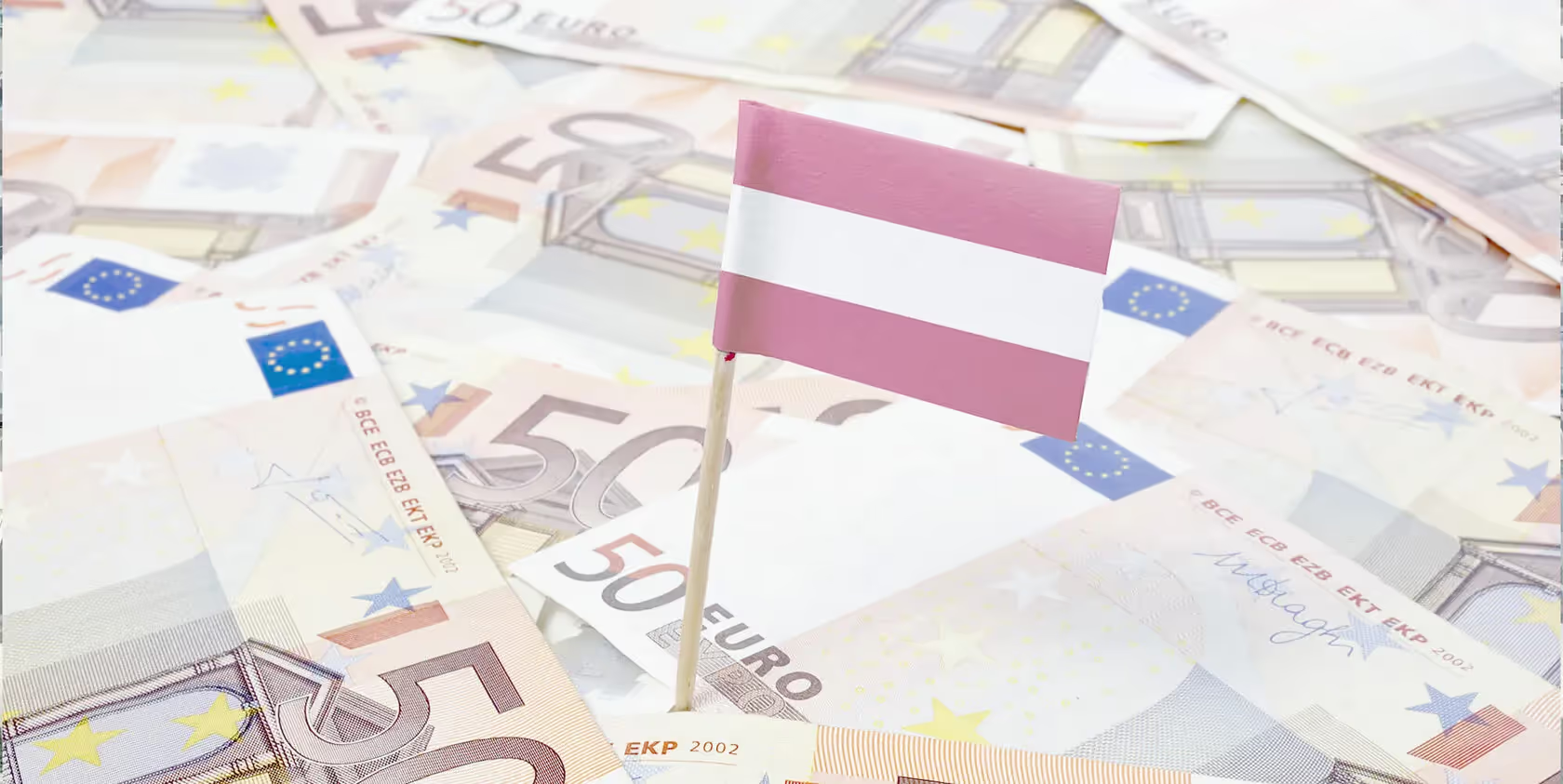
Austria is a modern country with a well-developed infrastructure, with accessible health care and education systems, reasonable taxation and migration policy. This is why Austria attracts not only tourists but also those who are looking for a good place to live with a better quality of life.
In order to migrate to Austria, you should be aware of future costs, including housing, transportation, utilities, food, and medical care. It will help you understand whether your savings or potential income will be enough for a comfortable living. Below you will find the necessary information, as well as a comparison of prices and rental rates in several cities of Austria.
General information
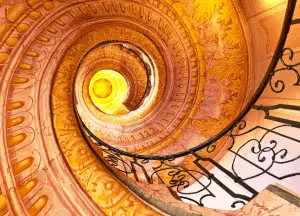
Austria is sometimes known as the most expensive country in Europe, it is not. However, it is one of the best places to reside in. The country is famous for its stunning ski resorts, gorgeous parks, cultural entertainment and prestigious schools and universities which are all available to residents within any of the nine federal states.
Apart from Vienna; the capital city of Austria, Salzburg, Linz and Baden are the most promising cities for relocation. Although Linz is the official capital of Upper Austria, the actual central city in this area is still Vienna, as it is located within the boundaries of this federal state.
Baden is relatively close to Vienna (30 minutes' drive to the city center) and actually forms a single urban agglomeration with Vienna, so we will not review it separately. Linz is located more than an hour by train from Vienna, which is a fairly long trip by European standards. Linz is the third most densely populated city in Austria.
Salzburg, the administrative center of the federal state of the same name, is located at the northern foot of the Alps, on the left bank of the Salzach. The heart of the city is Hohensalzburg where there are beautiful monuments of medieval architecture. Since the 15th century, Salzburg had been an industrial business center. Today, the city is home to high-tech enterprises and telecommunication companies. Salzburg has four universities, including the Private Paracelsus Medical University and the University of Salzburg.

There are other cities to consider if you are thinking of moving to Austria. Innsbruck was used twice as the site for the Winter Olympics (in 1964 and 1976) which means the city has a major sports center where competitions are held regularly. The city has an international airport, known as Kranebitten Airport that operates both local and international flights and is especially busy during the winter, due to the increased activity of skiers traveling to the region. The ancient architecture draws the attraction of tourists, while its industrial enterprises attract business individuals who are looking for work in the region.
Graz is the administrative center of Styria, another regional state of Austria in the southeast and the second most populated city. Styria has many ancient castles, monasteries and other monuments of medieval architecture as well as gorgeous ski resorts and lakes (Tragoss Gruner See, Toplitzsee), where one can visit in winter and in summer- both seasons are just as beautiful. Graz is much quieter than the capital city and not as expensive so it is a perfect place for family living and features a wide range of educational institutions (the University of Graz is the oldest and second-largest in Austria), a safe environment and excellent city infrastructure.
Residential real estate in austria
When moving to another country, one will look at buying or renting a place to live as the first priority, as it is one of the biggest monthly expenses, and you’ll also need a roof over your head when you get there! Although real estate in Austria isn't cheap, its prices are lower than in neighbouring countries like Germany and France — which can be up to 30% more.

Unlike many other European countries, Austria has restrictions for non-residents when buying a home. In this case, non-residents can either register real estate with a legal entity, which will pay taxes, or obtain a residence permit or citizenship. Austrian authorities have a reasonable approach to this issue and ask immigrants to prove that they are valuable as potential citizens of Austria — they can be qualified specialists or entrepreneurs who will contribute to the development of the economy or obtain an education in Austria with the intention to stay there. Such measures help to preserve the integrity and culture of Austrian society which is proven to be a safe and welcoming atmosphere in every region of the country.
Despite the many apartment blocks and high-rise buildings in the large cities and the capital, more than 50% of Austrians live in private houses or townhouses for families, and only 45% live in apartments. Because of the excessive price of real estate, most Austrians prefer to rent housing. Still, buying your own is worth considering, as mortgage rates are very favorable — about 2-3% per annum and buying property in general is always a better investment.
Real Estate Prices
If we consider the average cost per square meter for property in the central areas of major cities such as Vienna, Salzburg, or Innsbruck, the average cost is approximately EUR 5,160. Prices for 1 sq. m range between EUR 2,700 and EUR 3,700 for housing in the suburbs and residential neighborhoods . One can find prices around EUR 2,000 per square meter if you look hard enough.
The average prices for buying and renting a property in Austria at the beginning of 2021 are as follows:
The figures for Vienna are fairly average since there are both expensive outer districts (Außenbezirke) and inner districts (Innenbezirke) with more reasonable prices.
Comparison of prices for the purchase of a residential real estate in Vienna as of the beginning of April 2021 (according to immopreise.at and DerStandart):
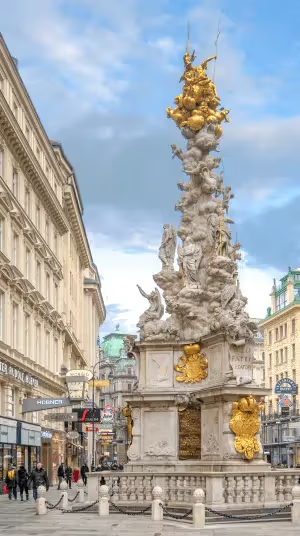
The highest cost per square meter of housing is in the 1st district of Vienna, the historic city center.
Even a small apartment (less than 50 square meters) costs an average of EUR 15,498 per sq. m. Most luxury residential real estate is concentrated in the Inner City and will have a much higher premium. To put it more simply, properties are modernized and restored historical buildings, built in the early 20th century or before which is always one of the main attractions for a buyer. For example, one of the most famous luxury residential complexes in the 1st district is Palais Hansen Kempinski Vienna and currently has a gorgeous 3-bedroom apartment for sale. This stunning neo-Renaissance building was built in 1873 by Theophil Edvard Hansen to welcome visitors to the World Exhibition. It offers 285 square meters of living space on the third floor.. In addition to the three bedrooms, the apartment has a large, fully-equipped kitchen, a magnificent spacious dining and living room with grand piano, a conference room and several bathrooms. The restored finishings are made of natural materials and every inch of detail has gone into making this apartment a truly gorgeous place to reside. Residents have access to two dedicated parking spaces in the underground parking lot. They can use the hotel services, including laundry, concierge service, cleaning and babysitting as well as the spa, swimming pool and fitness center within the building. The complex has a centralized air-conditioning system, 24-hour security and CCTV and the main attractions of the city are located within walking distance of the complex. The price of apartments in Palais Hansen Kempinski Vienna is EUR 10 million.
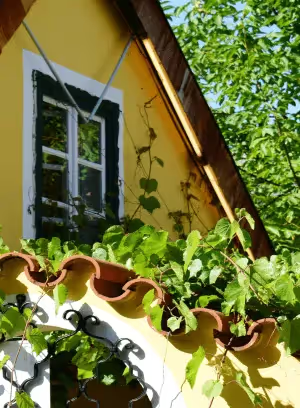
The outer districts of Währing (the 18th district) and Döbling (the 19th district) have soaring house prices as well.
These are quiet villa areas with lots of greenery, architectural monuments, with a peaceful environment. The official residence of the President of Austria (Hofburg Palace) is in Döbling, here you can find really interesting housing options with modern architecture and a comfortable layout. For instance, a three-bedroom penthouse in Sollingergasse with an area of 200 square meters is currently on offer. The penthouse is located on the attic floor of the building which was originally constructed in 1914. There is a beautiful 36 square meter terrace that overlooks the rest of the city, three bedrooms, two bathrooms, a storage room, a gorgeous dining area with an open-plan kitchen and study room. The interior design is in a contemporary style and all rooms are bright and spacious with an oak parquet floor. The penthouse also features gas central heating and air conditioning. The price of the Sollingergasse penthouse is around EUR 1.3 million.
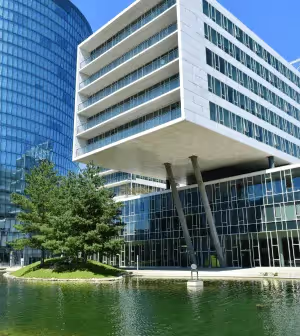
Among the inner districts, the 2nd and the 3rd districts of Vienna also have relatively high prices of real estate.
The 2nd district, Leopoldstadt, is a modern, well-developed area with many parks, including the Prater. The 3rd district, Landstrasse, has many attractions, including the famous Belvedere Palace, a diplomatic quarter and a lot of commercial real estate. In Landstrasse, one can buy modern apartments from 40 to 165 square meters in the new high-rise residential complex of TrIIIple. The complex has everything a resident could ever need for a comfortable living — 24-hour security, underground parking, a swimming pool on the roof and a private landscaped area with sports and playgrounds. There is also direct access to the shore of the Danube Canal.
.avif)
Compared to other inner districts, the 5th district of Margareten has some of the lowest prices for residential property.
The area has industrial enterprises, offices, and historical monuments with the district always attracting an array of residents. Now it is home to the middle class, including immigrants from other countries. It has a lot of apartments with good layouts and large areas. Among the outer districts, the 14th district of Penzing has relatively cheap housing. The district has a great ski resort located within the city limits and many luscious green forests.
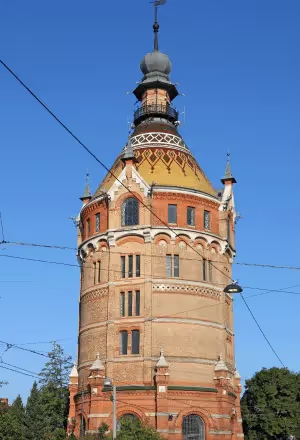
Prices of property are about the same in the 10th, 16th and 17th districts.
The 10th district of Vienna, Favoriten, is the most densely populated. There are both old buildings and new developments, as well as industrial properties where the cost of housing depends on the proximity to Favoritenstrasse, or to the city center. In the 16th district, Ottakring, more new buildings and apartment complexes are being built in addition to existing classic housing. Though the urbanization of the 17th district, Hernals, began much earlier — there are villas and apartment buildings from the early twentieth century along with modern apartment complexes and large shopping centers. More than 60% of Hernals is parks and green areas and has many prestigious schools and hospitals with good transport accessibility. All in all, the 17th district is a green and quiet place, where one can find not only apartments or villas but also townhouses. It was this district where the developer MKSD-InvestImmo built Hay Hills, a townhouse complex equipped with a smart home system. Each townhouse has a total area of 141.6 sq. m, a garage of 28.8 sq. m, and a roof terrace. Townhouses feature free planning due to the fact that the load-bearing structures are columns. The starting price of townhouses is EUR 1,195,000.
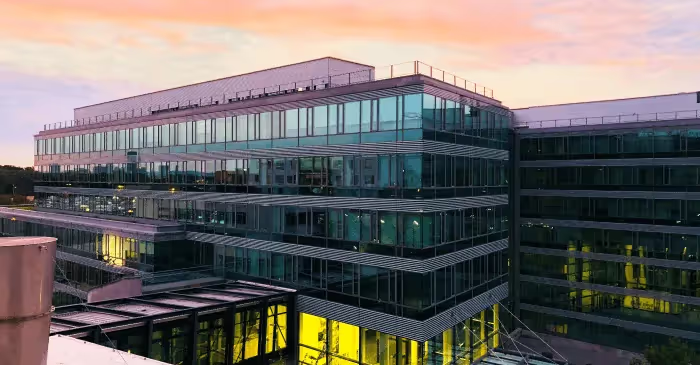
Simmering, the 11th district of Vienna offers the lowest prices of real estate and some interesting properties, such as large complexes located in the renovated Gasometers of Vienna.
Rental Prices
When comparing rental prices by city, in Vienna, the average monthly rentals for a one-bedroom apartment with a central location were EUR 886, and in cheaper areas — aroundEUR 639. (As of April 2021)
VIENNA
In Vienna, the rental prices are different depending on the district and some parameters of a property (location, transport accessibility, the year of construction, repairs, etc.) The purchase price of a property doesn’t always correlate with the rental price — there are expensive districts (where it is not convenient to rent out a property) and districts that are in demand among students and young professionals who prefer to live closer to their education facility or office and are willing to pay for the advantage. At the same time, they usually do not plan to purchase real estate in such areas, only rent. One can rent a studio in a residential community for three hundred euros, as well as a penthouse for a few thousand euros in the historic center.
SALZBURG
Salzburg is the second highest in terms of rental prices. Within the city, one can rent a one-bedroom apartment for about EUR 740 per month and a two-bedroom apartment for EUR 1,600. On the outskirts, a one-bedroom unit can be rented for EUR 630 and a two-bedroom unit for EUR 1,165.
INNSBRUCK
In Innsbruck, the average monthly rental price for a one-bedroom apartment is EUR 774 in the city and EUR 635 on the outskirts. A three-bedroom apartment can be rented for EUR 1,500 in the center and EUR 1,167 in the outskirts.
LINZ
In Linz, one can rent a one-bedroom apartment for EUR 672 per month and EUR 1,411 for a two-bedroom apartment in the city while rentals in the suburbs range from EUR 556 and EUR 994 euros respectively.
GRAZ
Of all major cities, the lowest average rental price is in Graz — a studio apartment in the center is EUR 594 per month, and EUR 441 in the suburbs. A three-bedroom apartment in the center costs EUR 1,120 per month and EUR 813 in the outskirts.
THE AVERAGE RENTAL PRICES IN VIENNA ARE AS FOLLOWS.
Comparison of rental prices per square meter in some districts of Vienna at the beginning of April 2021:
The presented average prices only reflect trends, but the actual data is quite large. In the 2nd district of Vienna (Leopoldstadt) one can rent a studio apartment of 33 square meters with heated floors, in a relatively new (built-in 1999) building with space for parking for EUR 550 per month, or EUR 16.6 per 1 sq. m. However renters will have to pay a commission cost of EUR 1,200 and provide a deposit of EUR 1,800 to secure the residence. Nevertheless, there are rental options directly from the owners, with no commission.
Prices for apartments within the same district can also be different, with the cost depending on the quality of housing and on the owner or agent. For example, at the beginning of April 2021, in the 4th district (Viden) one could rent a small, furnished one-bedroom apartment of 31 square meters for EUR 795 per month. This equates to 1square meter at a cost of EUR 25,6. However, one could find an even larger option (34 sq. m)located on the ground floor for only EUR 450. The cost of this property would be one sq. m for only EUR 13,2.
It is worth mentioning that the 9th district of Vienna (Alsergrund) is in high demand among students who come to study at the University of Vienna or the Medical University of Vienna. They tend to rent apartments in this district to save time and money on travel. Due to the popularity of the district, rental prices in Alsergrund are higher. Often, apartments are rented together by several students. The 9th and 8th districts (Josefstadt) are full of young people, entertainment venues, art galleries, cafes and restaurants so this is a great place to live whilst studying at university or in the first years of working and settling down, but it is not the best option for family living.
A spacious studio apartment of 41 sq. m in a new building located 30 minutes walk (10 minutes by tram) away from the University of Vienna costs EUR 690 per month. Options closer to the educational institutions are more expensive and it's pretty hard to find them.
Utility Cost
Residents of apartment buildings pay rent to the management company (water, MSW, lighting, sewage, repairs, etc.) For gas, electricity, internet and telephone one has to pay directly to service providers. Residents can choose any service provider they like. Electricity and gas bills are paid monthly or quarterly according to the average usage for the previous year and at the end of the year, the bills are recalculated. Depending on the actual consumption and the new tariffs, the consumer either pays the remaining sum or gets a refund if they've overpaid.
In Austria, there are three main options for heating the apartment — central, gas, or electric heating system (usually, it is floor heating). The central heating is included in the rent, while gas and electricity are paid to the respective service providers.
In 2020, the average cost per kWh of electricity in Austria is 0.1350 euros (no taxes) and 0.2102 (taxes included), which is slightly below average in the EU. Generally, the price per kWh of electricity throughout Austria ranges from EUR 0.17 to EUR 0.22. The price depends on the provider, the amount of energy consumed and the location. Households with high electricity consumption cost less. For example, 2,000 kWh per year in Vienna costs EUR 0.26 from the state provider, and EUR 0.21 for 6,000 kWh (according to www.e-control.at, the Austrian national regulator of the energy market). The prices of the most expensive and the cheapest electricity provider can be 1.5-2 times different.
.avif)
The average price for gas in Austria is EUR 0.3 – EUR 0.11 per kWh. Taking into account the average of 15,000 kWh per year in Upper Austria, the most expensive provider will charge EUR 0.11 for gas, whilst the state provider will charge EUR 0.6 and the cheapest provider will charge EUR 0.3. Different providers offer different tariffs for gas.For example, Linz Gas and Kellag, one will pay more than EUR 1,000 per year for 15,000 kWh, while the national average is about EUR 813 for the minimum tariff.
According to Austria Today, in 2021, the average electricity bill for an average household at the rate of 3,500 kWh/year is EUR 800. Households in Upper Austria, including Linz, have to pay the highest price of EUR 831. The annual electricity bill in Vienna is EUR 805, in Tyrol — EUR 741, Salzburg — EUR 760 and Styria — EUR 809.
Water tariffs vary from region to region. The most expensive water (EUR 1.2) per cubic meter is in Vienna and Styria. As a rule, the tap water is of very good quality and suitable for drinking.
The rent is calculated on the basis of the size of the apartment in correlation to the total area of the house — about EUR 4-5 per square meter on average.
Given the variety of tariffs for electricity and gas and the independence of management companies in terms of calculating the amount of rent, the utility bills can vary significantly depending on the region and the housing itself, as well as the number of residents.
High-speed Internet access costs about EUR 30 on average per month. Though, some still use ADSL, while satellite internet is popular in the countryside and mountains.According to Numbeo, the average utility bills in Austria are as follows:
The system for paying utility bills in Austria is characterized by clarity and convenience — the management company and service providers send bills with a detailed description of all payments and give all the necessary instructions. It is customary to treat natural resources and property with care and our neighbours with respect.
Food costs in austria

To compare the cost of living in Austria's main cities, let's have a closer look at the prices of basic food, household goods and other fixed costs. For convenience, we have given data per unit of goods without taking into account the amount of consumption:
Despite the fact that Vienna is more expensive to live in due to higher housing prices, other daily expenses in the capital do not exceed the national average. The most expensive city to live in is Innsbruck, the sports capital of Austria.
Education costs

Austria has a system of free public pre-schools and schools, where more than 90% of Austrian children study. There are private schools as well where the cost of education in such establishments can reach up to EUR 55,000 per year. Primary private schools can cost from EUR 5,000 to EUR 15,000 per year and the cost of a boarding school education can be up to EUR 65,000 per year.
The enrollment of groups in kindergartens does not exceed 30 children with the age of children from 3 to 6 years old. However, attendance for grades 1-9 is compulsory and free of charge. Graduation at an elementary school takes 4 years (from age 6) with one teacher. Classes begin from 8 am to 12 pm with 5-10 minutes' breaks. After school, a student can apply to university prep courses or take a skills training program to further their education.
Austria has several world-renowned universities all with a long history — the University of Vienna (the oldest university in Austria, founded in 1367), Vienna University of Economics and Business, University of Graz, University of Innsbruck and the University of Salzburg.
Since 2009, non-resident citizens of the EU have had to pay for tuition in state universities. In accordance with the Higher Education Act of September 24, 2008, the following tuition fees apply to state universities:
- Tuition fees in 2021 for EU and EEA citizens are EUR 363,36 per semester and for citizens of other countries is EUR 726.72 per semester
- Student organization contributions in 2021 are EUR 20.20 for all students
Health care
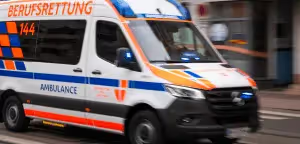
Austria's health insurance and social security system is a well-developed system with more than 99% of the population having public health insurance. It covers expenses such as emergency services, vaccinations, annual medical checkups, psychiatrist and optician services, basic dental care, maternity care and many other basic services. It also allows you to pay a pharmacy fee (EUR 6.3) when buying prescription drugs and partially covers sick day pay. On average, state insurance covers more than 45% of medical expenses.
Besides EU and Austrian citizens, employed expats and their family members are entitled to medical insurance as well. Business owners and freelancers can use the state health insurance programme in Austria, but in this case, they pay the fee from their own insurance budgets. Non-EU students who live in the country with a student visa must pay for medical insurance for the entire period of their stay when at the point of obtaining their visa. EU citizens can use ENIC, the European Health Insurance Card.
In addition to state insurance, one can buy private insurance which will cover many more expenses and private medical examinations.
The state health insurance certificate comes in the form of a plastic card or an e-card, which one has to use when visiting doctors and pharmacists. Without health insurance one has to pay their medical expenses from their own expenses. To give you a quick example, an examination with a private doctor in Austria costs about EUR 100.
Travel card and transportation costs
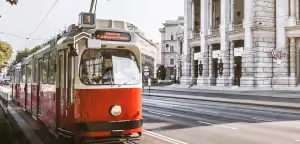
Austria has a well-developed public transport system, that services both intra- and intercity traffic. The trains' schedule is strictly monitored and the carriages are always clean and the highways and street roads are of very good quality. Children aged under 6 years are free of charge when using public transport and children from 7 to 15 years pay half the price of an adult's ticket but can use a free pass during school holidays and Sundays. Vienna is the only city of Austria that has a subway network.
Rail and Intercity Bus Service
The S-Bahn (a high-speed railroad) trains, which is a part of the Austrian Federal Railways (ÖBB) are also a part of Vienna's public transport system — within the city, one can buy internal tickets at the same rates. Vienna and Lower Austria are served by ten S-Bahn lines. Austria has a total of 26 S-Bahn lines and each of the regional states has its own S-Bahn division.
There are other types of trains, such as REX (Regional Express) — high-speed regional trains; R (Regional Zug) — local lines; RJ (Ralijet) — high-speed long-distance trains; NJ (Night Jet) — night high-speed trains; WestBahn — private company trains (on the route "Vienna–Salzburg''); high-speed intercity trains ICE (Intercity-Express); and EC (Euro City). The cost of these ticket depends on the travel distance, the date and time of travel and the class of the carriage. A return second class ticket between the main cities of Austria for one person can cost from EUR 20 to EUR 40. First-class tickets are about twice as expensive.
Some routes are included when buying a travel card. For example, a monthly travel card from Linz to Vienna costs EUR 282.1 and a weekly card costs EUR 80.60. Travel cards are popular among residents who need to travel to the capital city to get to work.
The bus service between the cities is poorly developed — there are Post Bus services running on local routes. The Austrian Federal Railways also provides bus transportation in Europe. Tickets cost up to EUR 20 and can be combined with train tickets.
Urban public transport in Austria
Vienna
Public transportation in Vienna includes buses and streetcars, as well as the subway. It is worth noting that Vienna is the only city in Austria with 7 metro lines of 5 lines, four of which pass through the city center. One ride costs EUR 2.4 (EUR 1.5 for retirees and EUR 1.2 for children aged 6 to 15, a dog also needs a ticket for EUR 1.2), a 24-hour pass costs EUR 8, a 48-hour pass costs EUR 14.10 and a weekly pass costs EUR 17.10.An annual travel card costs EUR 365 for adults and EUR 235 for citizens above 64 years old, while the annual WIEN ABM card costs EUR 396 and EUR 246 respectively (this can be paid on a monthly basis). There are other types of tickets on offer as well. All prices given below are based on prices within the tariff zone. Rides outside the main zone are charged double.
Salzburg
Salzburg has a very unique mode of transport — the most popular transport here is still a trolley bus. A one-ride ticket for adult passengers on a normal bus costs from EUR 2 and from EUR 2.9 on a trolley bus. A monthly bus ticket costs EUR 60, and an annual pass costs in the region of EUR 299 to EUR 465.
Linz
Linz has both buses and trams, with a ticket price of EUR 2.5 for a single ride, EUR 5 for 24 hours, EUR 50.1 for a month and EUR 285 for a year.
Graz
In Graz and the rest of Styria, a one-way ticket using public transport costs EUR 2.5 per zone for one hour. A weekly pass costs from EUR 15.8. An annual pass costs from EUR 473, but the price varies on the number of zones and the duration of the trip. The price for an annual pass to 13 different tariff zones will cost more than EUR 2,000. Graz has cable cars, with a ticket price of EUR 2.5.
Innsbruck
In Innsbruck, a one-way ticket for any mode of transport costs from EUR 2.5. The weekly pass is EUR 22.2 in Innsbruck and from EUR 45 for the rest of Tyrol, while a monthly pass is EUR 56 (Innsbruck) and EUR 99.9 (Tyrol). An annual pass costs EUR 136 in Innsbruck and EUR 499.4 in Tyrol.
Taxi and Carsharing Services
A fixed rate for taxis are set by the local authorities. In Vienna, the base taxi fare on weekdays is EUR 3.8 on average during the day. Rides up to 2.5 miles are EUR 2.28 per mile, from 2.5 to 5.5 miles the cost is EUR 1.73 per mile and over 5.5 miles costs EUR 1.68 per mile.
The night fare (from 23:00 to 06:00 on weekdays and also on Sundays and public holidays) is EUR 4.3. The price for up to 2.5 miles is EUR 2.60 per mile, from 2.5 to 5.5 miles is EUR 2.05 per mile, over 5.5 miles costs EUR 1.89. The average base fare in Austria is about EUR 4, and the average cost per mile is EUR 2.89.
Carsharing in Vienna is represented by Car2Go and DriveNow, the minimum cost of the service is EUR 0.26 per minute.
Bicycles
Bicycle’s are a common and very popular mode of transport among the Austrian population. In Vienna, for example, the company CityBike offers bike rentals for EUR 1 per hour.
Things Drivers Need to Know
A driver's license renewal in Austria costs EUR 326. The price includes the issuance of a medical certificate, the fee for the mandatory practical test, the cost of the actual test and the state fee.
Keep in mind that in Austria there are a lot of toll roads and the price, in which the toll can vary from EUR 2 to EUR 10. It may be more reasonable to buy a special sticker for toll roads (available digitally since 2018). They can be issued for ten days for EUR 9.5, for two months for EUR 27.8 or for one year at a price of EUR 92.8. The fine for unpaid tolls is EUR 120.
Conclusion
In Austria, the cost of living differs from region to region.
The most expensive cities are Innsbruck and Graz — one will spend more on living essentials than in Vienna. At the same time, the increased cost of daily expenses in Graz is compensated by the low cost of real estate. The cost of renting and buying a home is higher in the capital region and Innsbruck (Tyrol). Rental prices are much higher in Vienna, although Innsbruck and Tyrol are more expensive in terms of buying.
Both luxury and budget properties are of high quality.
Of course, Austria has social housing, but there are no run-down areas and no deprived neighborhoods. Landlords, service providers, owners and other participants in the real estate market honor their obligations.
A buyer has a good choice
A buyer has a good choice of both expensive and budget properties, from castles and "smart townhouses" to relatively inexpensive but good-quality buildings from the middle and late last century.
Share your contact details, and we will happily assist you in finding your dream property






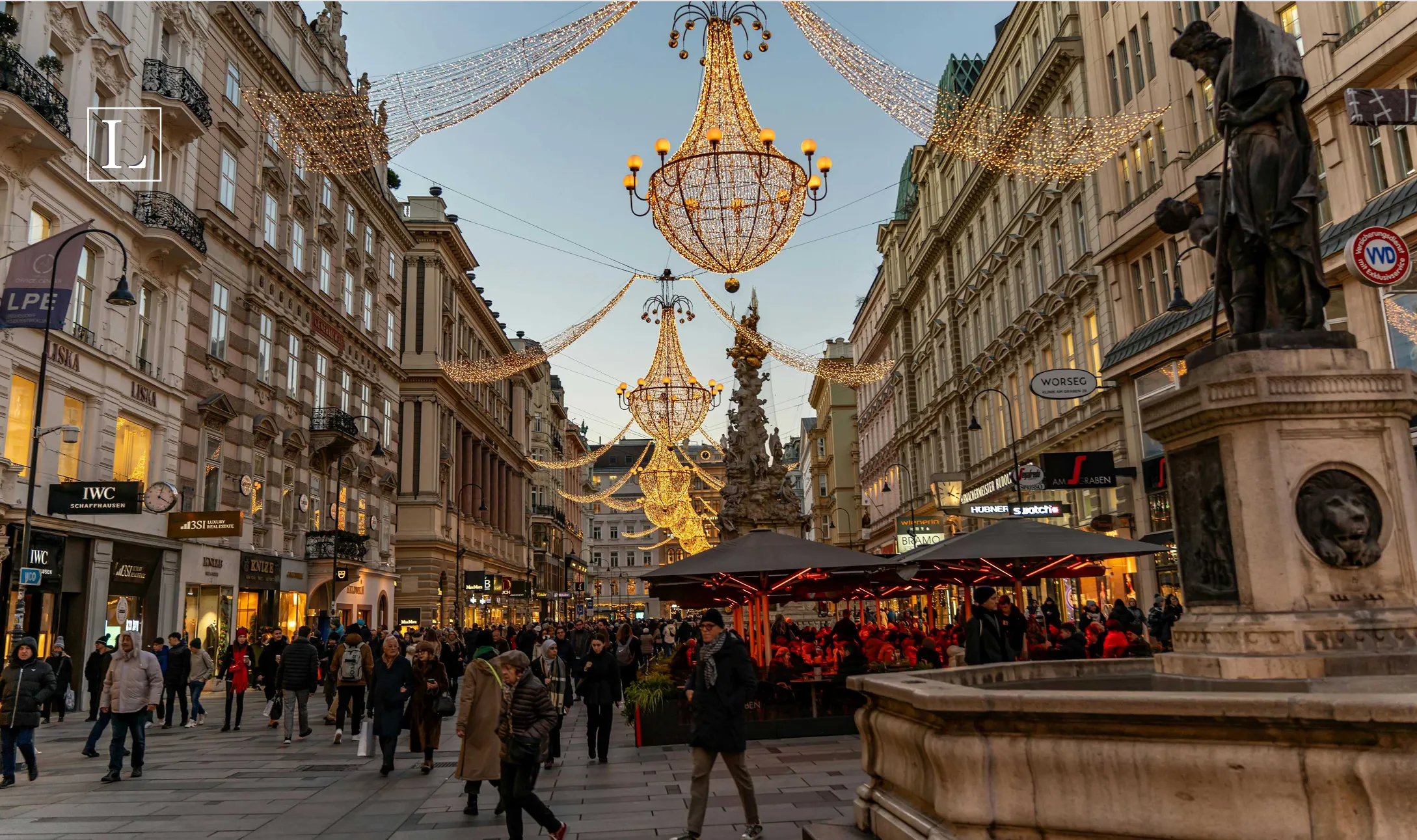
-p-2000.webp)
.avif)
%20(2).avif)



